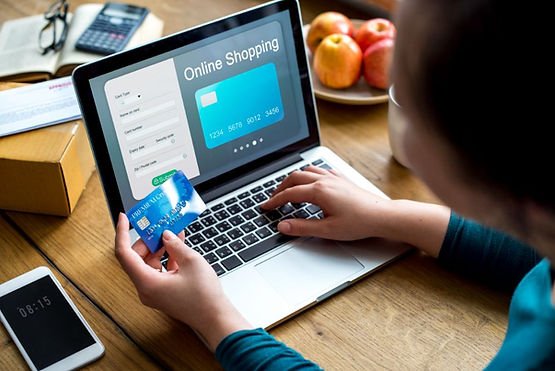Top Tactics for Maximizing E-Commerce Success During Seasonal Sales and Festive Occasions
2. Make your website a speed demon
3. Be the life of the (sales) party
4. Get personal, but not creepy
5. Paint the town (social media) red
7. Channel your inner customer service superhero
8. Make friends in high (influencer) places
10. Time-travel through your data
“The best way to predict the future is to create it.” – Peter Drucker
For businesses looking to maximize sales during seasonal sales and festive occasions, this quote serves as a reminder to be proactive and innovative in marketing efforts. By planning, developing creative promotional campaigns, and continually refining strategies based on customer feedback, businesses can create a successful future and boost their sales during special occasions.
The sweet scent of seasonal sales and holiday cheer is in the air, and it’s time for your e-commerce business to bask in the glory of increased customer spending. But hold your (rein)deer! To truly make the most of this magical time, you’ll need to arm yourself with the top 10 strategies to outshine your competition and maximize your revenue. From mastering the art of time-sensitive deals to unleashing the power of social media, we’ve got the perfect gift-wrapped guide to make your e-commerce store sparkle like a festive fairy tale. So, strap on your Santa hat, hop onto your digital sleigh, and join us as we unwrap the secrets to holiday sales success!
1. Beat the Clock

It’s always a race against time when it comes to seasonal sales and holidays in the e-commerce world. To make the most out of these opportunities, you need to be agile, innovative, and strategic. Let’s dive into some tried-and-tested strategies to help your e-commerce business “beat the clock” during these peak shopping periods.
Timely planning and preparation:
The early bird catches the worm, so start planning your seasonal sales and holiday promotions well in advance. Develop a calendar with important dates, and consider your inventory, shipping, and marketing needs. By planning, you’ll be ready to kick off your campaigns on time and capitalize on the increased traffic.
Create a sense of urgency:
Time-limited offers create a sense of urgency that can drive customers to make quick purchasing decisions. Countdown timers, flash sales, and limited stock availability are all effective ways to encourage shoppers to act fast and avoid missing out on great deals.
Optimize your website for peak traffic:
Slow-loading websites are a major turn-off for online shoppers. Make sure your website can handle the increased traffic during seasonal sales and holidays by optimizing your site’s speed, ensuring a smooth user experience, and being prepared to scale up your server capacity if necessary.
Offer exclusive deals:
Stand out from the competition by offering exclusive deals and promotions for your e-commerce store. Leverage your email list and social media platforms to announce these limited-time offers, and consider partnering with influencers or other businesses to reach new audiences.
Leverage FOMO (Fear of Missing Out):
Use FOMO to your advantage by highlighting popular products that are selling out quickly or showcasing customer reviews and testimonials. This can encourage potential buyers to purchase before they miss their chance.
Streamline the checkout process:
A smooth and efficient checkout process is essential for converting browsers into buyers. During seasonal sales and holidays, shoppers are often in a hurry, so remove any unnecessary steps, offer guest checkouts, and provide multiple payment options to minimize cart abandonment.
Retarget abandoned carts:
With the increased traffic during seasonal sales and holidays, there’s a higher chance of shoppers abandoning their carts. Set up retargeting campaigns through email and social media to remind customers of their abandoned items and entice them back with personalized incentives.
Post-sale engagement:
Don’t forget about your customers after they’ve made a purchase. Send follow-up emails with personalized recommendations, upsell or cross-sell offers, and incentives for future purchases. This will help you build lasting relationships and turn one-time buyers into loyal customers.
Remember, it’s all about planning, innovation, and execution. Happy selling!
2. Make Your Website a Speed Demon

A fast-loading website is a must when online traffic spikes and every second counts. In this section, we’ll explore how to turn your e-commerce website into a speed demon, ensuring a lightning-fast and seamless shopping experience for your customers.
Run a speed audit:
Start by testing your website’s current speed using tools like Google PageSpeed Insights or GTmetrix. These tools provide valuable insights into your site’s performance and suggest areas for improvement.
Optimize images:
Heavy images can slow down your website considerably. Compress and resize images without compromising quality using tools like TinyPNG or ImageOptim, and consider using modern formats like WebP for even better compression rates.
Enable browser caching:
Browser caching stores a version of your website on visitors’ devices, reducing the time it takes to load your site on subsequent visits. Enable caching by configuring your server settings or using a caching plugin.
Minify CSS, JavaScript, and HTML:
Minifying your code removes unnecessary characters and spaces, reducing file sizes and speeding up page load times. Use tools like CSSNano, UglifyJS, or HTMLMinifier, or rely on plugins for your content management system.
Use a Content Delivery Network (CDN):
CDNs distribute your website’s content across multiple servers around the world, allowing users to load your site from a server closest to them. This can significantly reduce latency and improve page load times.
Lazy load content:
Lazy loading defers the loading of images and other elements until they’re needed, speeding up initial page load times. Implement lazy loading using JavaScript libraries like Lozad.js or by leveraging built-in browser features.
Prioritize above-the-fold content:
Ensure that the content at the top of your pages (above the fold) loads first, providing a quick and engaging experience for visitors while the rest of the page loads in the background.
Use HTTP/2:
HTTP/2 is a more efficient protocol that allows multiple requests to be sent and received simultaneously, speeding up page load times. Most modern browsers support HTTP/2, so check with your hosting provider to enable it for your website.
Regularly update and maintain:
Keep your website, plugins, and themes up-to-date to benefit from performance improvements and bug fixes. Regularly review your site for unused plugins, themes, or scripts that can be removed to declutter your codebase.
By transforming your e-commerce website into a speed demon, you’ll provide a top-notch shopping experience for your customers, giving you a competitive edge and boosting conversion rates. So buckle up, and get ready to race ahead of the competition!
3. Be The Life of The (Sales) Party

To truly thrive during seasonal sales and holidays, your e-commerce business needs to stand out from the crowd and be the life of the (sales) party. In this section, we’ll share some exciting and engaging strategies to create buzz, attract customers, and make your online store the go-to destination for shoppers.
Theme it up:
Embrace the spirit of the season or holiday by incorporating festive themes into your website design, product packaging, and marketing materials. This helps create a memorable shopping experience and showcases your brand’s personality.
Social media festivities:
Amp up your social media game with holiday-themed content, interactive contests, and giveaways. Engage with your audience through Instagram stories, Facebook polls, or Twitter chats, and use popular seasonal hashtags to reach a wider audience.
Gift guides galore:
Curate themed gift guides that cater to different customer segments and interests, making it easier for shoppers to find the perfect presents. Promote these guides through email campaigns, social media, and blog posts to drive traffic and sales.
Collaborate and celebrate:
Partner with complementary businesses, influencers, or local communities to co-host holiday-themed events, giveaways, or promotions. These collaborations can help you reach new audiences, generate buzz, and reinforce your brand values.
Video content extravaganza:
Create engaging video content that showcases your products, offers holiday-themed tips, or provides behind-the-scenes insights into your business. Share these videos on your website, social media channels, and YouTube to entertain and inform your audience.
Gamify the shopping experience:
Introduce interactive games, quizzes, or scavenger hunts on your website to make shopping more fun and engaging. Offer rewards, discounts, or exclusive offers to participants, encouraging them to explore your products and make purchases.
Customer appreciation:
Show your gratitude to loyal customers with personalized thank-you messages, special discounts, or exclusive holiday-themed perks. This not only fosters customer loyalty but also encourages word-of-mouth marketing.
Email marketing with a twist:
Spice up your email marketing campaigns with entertaining subject lines, eye-catching visuals, and engaging content. Use humor, storytelling, or interactive elements to grab your subscribers’ attention and drive them to your store.
Pop-up holiday shops:
Create a limited-time virtual pop-up shop on your website, showcasing exclusive products or special promotions. This adds an element of surprise and excitement, encouraging customers to visit your store and make a purchase before time runs out.
By becoming the life of the (sales) party, your e-commerce business will create an unforgettable shopping experience that keeps customers coming back for more. So put on your party hat, crank up the festive tunes, and let’s make this season one for the record books!
4. Get Personal, but Not Creepy

Personalization can boost customer engagement and sales during seasonal events, but there’s a fine line between being helpful and coming across as invasive. In this section, we’ll explore how to strike the perfect balance by offering personalized experiences that delight your customers without crossing into creepy territory.
Tailor product recommendations:
Use customer browsing and purchase history to suggest relevant products without being too intrusive. Display these recommendations on your website or in email campaigns to gently guide customers towards products they’ll likely enjoy.
Segment your audience:
Divide your customers into distinct groups based on their interests, demographics, or shopping behavior. Create targeted marketing campaigns and promotions for each segment, ensuring your message is relevant and engaging without being overly specific.
Personalized discounts and offers:
Offer tailored discounts or exclusive deals to customers based on their previous purchases or interactions with your store. Be careful not to reveal too much information about their browsing habits—keep it light and fun.
Customized email campaigns:
Use dynamic content in your email campaigns to address subscribers by their first name, mention recently viewed products, or suggest complementary items. Keep the personalization subtle and focused on providing value, not stalking.
Chatbots with a human touch:
Implement chatbots to assist customers with their queries and offer personalized product recommendations. Ensure your chatbot’s tone is friendly and helpful, and provide the option for customers to connect with a human representative if needed.
Curate a unique shopping experience:
Design personalized landing pages or shopping experiences based on customer preferences or past interactions. Keep the focus on making their shopping journey enjoyable and straightforward, without giving the impression that you’re monitoring their every move.
Celebrate special occasions:
Send personalized greetings or special offers to customers on their birthdays, anniversaries, or other milestones. Be mindful of your customers’ privacy and only use information they’ve willingly shared with you.
Respect customer privacy:
Always adhere to data protection regulations and be transparent about how you collect and use customer data. Provide clear options for customers to manage their data preferences and communicate any changes to your privacy policies.
By getting personal without getting creepy, you’ll create a memorable and enjoyable shopping experience for your customers. Show them you care, but remember: no one likes a stalker. Happy personalizing!
5. Paint the Town (Social Media) Red

Social media is an indispensable tool for e-commerce businesses during seasonal sales and holidays. In this section, we’ll explore how to paint the town (social media) red by creating a buzz, reaching new audiences, and driving traffic to your online store—all while having a blast!
Plan a festive content calendar:
Create a content calendar for your seasonal campaigns, incorporating a mix of promotional posts, entertaining content, and user-generated material. Balance your posts to avoid overwhelming your audience with constant sales pitches.
Hashtag it up:
Research and use popular holiday-related hashtags to increase the visibility of your posts and attract new followers. Don’t be afraid to get creative and come up with your own branded hashtags to encourage user-generated content.
Host social media contests:
Organize fun and engaging contests, like photo challenges, caption contests, or product giveaways. These events create excitement, boost interaction, and can help your brand go viral during the holiday season.
Go live:
Host live streaming sessions on platforms like Instagram or Facebook to showcase new products, offer holiday-themed tutorials, or host a Q&A session. Live streams foster real-time engagement and provide an opportunity to connect with your audience on a deeper level.
Leverage Stories and Reels:
Use Instagram Stories and Reels to share behind-the-scenes content, holiday DIYs, or limited-time offers. These formats are perfect for sharing quick, entertaining content that captures the excitement of the season.
Engage with your audience:
Respond to comments, messages, and mentions promptly, showing your customers that you value their feedback and are available to help. Create a sense of community by asking questions, sharing user-generated content, and encouraging conversations among your followers.
Track and analyze:
Keep an eye on your social media analytics to identify top-performing content, track engagement rates, and monitor your audience’s growth. Use this data to fine-tune your strategy and ensure your campaigns are resonating with your target audience.
By painting the town (social media) red, your e-commerce business will create a festive, engaging, and memorable online presence. So, let your creativity run wild and watch as your online store becomes the talk of the town!
6. Spend Money to Make Money

Investing in strategic advertising and marketing efforts during seasonal sales and holidays can yield significant returns for your e-commerce business. In this section, we’ll explore how to smartly spend money to make money, helping you maximize your profits and conquer the holiday shopping frenzy.
Retargeting campaigns:
Launch retargeting campaigns to re-engage customers who have previously visited your website or abandoned their shopping carts. Use tailored ads and personalized offers to remind them of the products they’ve shown interest in and entice them to complete their purchase.
Paid social media ads:
Run targeted social media ads on platforms like Facebook, Instagram, or Pinterest to reach potential customers who are likely to be interested in your products. Use eye-catching visuals, compelling copy, and exclusive offers to capture their attention.
Google Shopping ads:
Leverage Google Shopping ads to showcase your products directly in the search results when users search for specific items. These ads include images, prices, and merchant information, making it easy for shoppers to compare and choose the best option.
Influencer marketing:
Partner with influencers to create sponsored content, product reviews, or unboxing videos. Influencer marketing can be a cost-effective way to reach new audiences, build trust, and generate excitement around your products and promotions.
Email marketing:
Invest in a robust email marketing platform that allows you to create and send highly targeted campaigns. Use advanced segmentation, automation, and personalization features to optimize your messages and drive conversions.
Affiliate marketing:
Implement an affiliate marketing program to incentivize bloggers, influencers, and other partners to promote your products in exchange for a commission on sales. This performance-based approach ensures you only pay for actual results.
Search engine optimization (SEO):
Allocate resources to improve your website’s SEO, making it easier for potential customers to find your products organically through search engines. Focus on optimizing product descriptions, metadata, and on-site content to boost your search rankings.
Conversion rate optimization (CRO):
Invest in CRO tools and services to analyze your website’s performance and identify areas for improvement. Run A/B tests, streamline your checkout process, and eliminate barriers to purchase to increase conversions and maximize your ad spend ROI.
By spending money wisely on strategic marketing and advertising initiatives, your e-commerce business will attract more customers, generate higher sales, and make the most of the seasonal sales. So, go ahead and invest in your success—sometimes, you’ve got to spend money to make money!
7. Channel Your Inner Customer Service Superhero

Exceptional customer service can be the secret weapon that sets your e-commerce business apart from the competition. In this section, we’ll reveal how to channel your inner customer service superhero and swoop in to save the day for your shoppers, earning their loyalty and appreciation in the process.
Staff up for the season:
Ensure you have enough customer service representatives on deck to handle the increased volume of inquiries during the holiday rush. Proper staffing will help you maintain quick response times and keep customers happy.
Multichannel support:
Offer support through multiple channels, such as email, live chat, social media, and phone. This allows customers to choose their preferred method of communication and ensures you’re accessible when they need assistance.
Empower your team:
Equip your customer service team with the tools, knowledge, and authority they need to effectively address customer concerns. Empowering your team to make decisions and resolve issues quickly will boost customer satisfaction.
Create a holiday FAQ:
Develop a comprehensive FAQ section on your website, addressing common seasonal questions and concerns. This proactive approach will save both your customers and your support team valuable time.
Extend your support hours:
Consider offering extended customer service hours during the holiday season to accommodate shoppers in different time zones or those who shop outside of regular business hours.
Personalize your interactions:
Train your customer service representatives to personalize their interactions with customers, addressing them by name and making an effort to understand their specific needs. This personal touch can create lasting, positive impressions.
Be proactive with updates:
Keep customers informed about order status, shipping updates, and potential delays. Proactively communicating this information can alleviate concerns and prevent a flood of inquiries.
Encourage feedback:
Welcome customer feedback, both positive and negative, to help identify areas for improvement. Use this valuable insight to refine your customer service strategy and ensure you’re meeting the needs of your shoppers.
Go the extra mile:
Surprise and delight your customers with unexpected gestures, like personalized thank-you notes, small freebies, or expedited shipping upgrades. These thoughtful touches can create memorable experiences and foster brand loyalty.
By channeling your inner customer service superhero, you’ll transform your e-commerce business into a customer-centric powerhouse, winning the hearts of shoppers. So, don your cape, flex those customer service muscles, and get ready to save the day—one satisfied customer at a time!
8. Make Friends in High (Influencer) Places

Influencer partnerships can propel your e-commerce business to new heights during seasonal sales and holidays. In this section, we’ll explore how to make friends in high (influencer) places, leveraging their star power to boost your brand’s visibility, credibility, and sales.
Identify the right influencers:
Research and select influencers who align with your brand’s values, target audience, and niche. Look for individuals with high engagement rates, authentic content, and a genuine connection with their followers.
Create a win-win collaboration:
Design mutually beneficial collaborations that offer value to both your brand and the influencer. This could include sponsored posts, product reviews, exclusive discount codes, or co-created content.
Plan holiday-themed campaigns:
Develop holiday-specific influencer campaigns that resonate with the festive spirit. For example, have influencers create gift guides featuring your products, participate in seasonal challenges, or share their favorite holiday traditions alongside your items.
Leverage user-generated content:
Encourage influencers to create user-generated content (UGC) that showcases your products in real-life settings. UGC can be more relatable and engaging than polished ads, making it a powerful tool for driving sales.
Host joint giveaways:
Team up with influencers to host giveaways or contests on social media. This can help expand your reach, increase brand awareness, and incentivize users to engage with your content.
Invite influencers to takeovers:
Allow influencers to “take over” your social media accounts for a day, giving them creative control to showcase your products, share their experiences, and engage with your audience. This can provide fresh perspectives and attract new followers.
Monitor and measure success:
Track the performance of your influencer campaigns by monitoring key metrics such as engagement rates, conversions, and ROI. Use this data to refine your strategy and optimize future partnerships.
Build long-term relationships:
Invest in building long-term relationships with influencers who consistently deliver results. This fosters trust, deepens collaborations, and can lead to more impactful campaigns over time.
By making friends in high (influencer) places, your e-commerce business will shine bright, capturing the attention of new customers and turning them into loyal fans. So, start schmoozing and watch your brand soar to new heights!
9. Be the SEO-Whisperer

Mastering the art of search engine optimization (SEO) can give your e-commerce business a competitive edge during seasonal sales and holidays. In this section, we’ll reveal how to become the SEO-Whisperer, unlocking the secrets of search engines and optimizing your online store to attract more organic traffic and sales.
Keyword research:
Conduct thorough keyword research to identify relevant, high-traffic search terms related to your products and the holiday season. Incorporate these keywords into your website content, product descriptions, and metadata to improve your search rankings.
Optimized product pages:
Create well-structured, informative, and keyword-rich product pages that offer value to your visitors. Use descriptive titles, engaging product descriptions, and high-quality images to enhance the user experience and encourage conversions.
Holiday landing pages:
Develop dedicated holiday-themed landing pages to showcase your promotions, sales, and seasonal products. These pages can rank for holiday-specific search terms, driving organic traffic and boosting sales.
Mobile optimization:
Ensure your website is mobile-friendly, as a majority of holiday shoppers use their smartphones to browse and make purchases. Optimize your site for fast loading times, easy navigation, and a seamless checkout process on mobile devices.
Internal linking:
Implement a strategic internal linking structure to help search engines crawl your website more efficiently and understand the relationships between your pages. This can lead to better indexation and higher search rankings.
Backlink building:
Create valuable, shareable content and engage in outreach efforts to earn high-quality backlinks from reputable websites. Backlinks can improve your website’s domain authority and increase your chances of ranking higher in search results.
Seasonal content:
Publish holiday-themed blog posts, gift guides, and articles to attract organic traffic and establish your e-commerce store as a go-to resource for holiday shopping. Promote this content on social media and through email marketing to further amplify its reach.
Measure and analyze:
Monitor your website’s performance using SEO analytics tools like Google Analytics, Google Search Console, or Moz. Use the data to identify areas for improvement, track the success of your efforts, and refine your SEO strategy.
Become the SEO-Whisperer, so you’ll harness the power of search engines to drive organic traffic and sales to your e-commerce store. Listen closely, optimize strategically, and watch your online store rise to the top of search results!
10. Time-Travel Through Your Data

Analyzing past data can help your e-commerce business make informed decisions and create more effective strategies for seasonal sales and holidays. In this section, we’ll explore how to time-travel through your data, unlocking insights from the past to fuel your future success.
Identify trends:
Review historical sales data to identify patterns, such as best-selling products, peak shopping days, and popular promotions. Use this information to tailor your offers and marketing efforts to align with customer preferences.
Evaluate marketing campaigns:
Analyze the performance of previous marketing campaigns, examining key metrics like conversion rates, ROI, and engagement. Identify the tactics that were most successful and use them as a foundation for your upcoming campaigns.
Forecast inventory:
Use past sales data to anticipate inventory needs and avoid stockouts or overstocking. Make data-driven decisions about which products to promote and when to replenish your inventory to meet customer demand.
Optimize pricing:
Analyze historical pricing data to determine the optimal price points for your products during seasonal sales and holidays. Find the sweet spot between enticing discounts and maintaining profitability.
Assess customer feedback:
Review customer reviews, feedback, and support inquiries from previous holiday seasons to identify common pain points or areas for improvement. Address these issues to enhance the customer experience and avoid repeating past mistakes.
Refine segmentation:
Examine your customer data to better understand your target audience’s demographics, preferences, and behaviors. Use this information to refine your customer segmentation and deliver more personalized, relevant marketing messages.
Improve website performance:
Analyze your website’s performance data from previous holiday seasons, identifying issues like slow loading times, high bounce rates, or low conversion rates. Implement improvements to optimize the user experience and increase sales.
Track competitor performance:
Study your competitors’ strategies during past seasonal sales and holidays, noting their successes and failures. Use these insights to inform your own strategy and stay one step ahead in the competitive landscape.
By time-traveling through your data, you’ll unearth valuable insights that can shape your e-commerce business’s strategy. So, strap on your data-driven time machine and prepare to discover the secrets of past success, propelling your business into a brighter, more profitable future! And for those aspiring time-traveling merchants seeking expert guidance, why not journey with our seasoned e-commerce coaching crew? Together, we’ll navigate the space-time continuum of online success, ensuring you reach your destination in record time!

